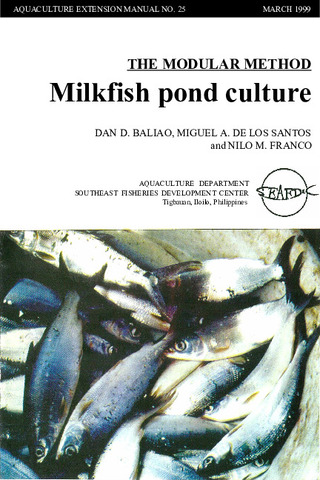Significant organotin contamination of sediment and tissues of milkfish in brackish water ponds.
| dc.contributor.author | Coloso, R. M. | |
| dc.contributor.author | Borlongan, I. G. | |
| dc.date.accessioned | 2013-11-25T08:15:41Z | |
| dc.date.available | 2013-11-25T08:15:41Z | |
| dc.date.issued | 1999 | |
| dc.identifier.citation | Coloso, R. M., & Borlongan, I. G. (1999). Significant organotin contamination of sediment and tissues of milkfish in brackish water ponds. Bulletin of Environmental Contamination and Toxicology, 63(3), 297-304. | en |
| dc.identifier.issn | 0007-4861 | |
| dc.identifier.uri | http://hdl.handle.net/10862/1760 | |
| dc.description.abstract | Organotin pesticides, triphenyltin acetate or hydroxide have long been used as an inexpensive method to control the population of brackish water shails Cerithidea cingulata in the pond culture of milkfish (Chanos chanos Forsskal), and important food fish in the Philippines. The use of organotin pesticeds has been banned for several years now because the chemical renders the soil sterile, is nonbiodegradable and bioaccumulates, and is hazardous to humans. Despite the ban, the clandestine use of the pesticide in milkfish ponds continues to threaten the environment and humans. | en |
| dc.language.iso | en | en |
| dc.publisher | Springer Verlag | en |
| dc.subject | milkfish | en |
| dc.subject | Chanos chanos | en |
| dc.title | Significant organotin contamination of sediment and tissues of milkfish in brackish water ponds. | en |
| dc.type | Article | en |
| dc.identifier.doi | 10.1007/s001289900980 | |
| dc.citation.volume | 63 | |
| dc.citation.issue | 3 | |
| dc.citation.spage | 297 | |
| dc.citation.epage | 304 | |
| dc.citation.journalTitle | Bulletin of Environmental Contamination and Toxicology | en |
| seafdecaqd.library.callnumber | VF SJ 0603 | |
| seafdecaqd.databank.controlnumber | 1999-32 | |
| dc.subject.asfa | bioaccumulation | en |
| dc.subject.asfa | pollution monitoring | en |
| dc.subject.asfa | sediment pollution | en |
| dc.subject.asfa | tin compounds | en |
| dc.subject.scientificName | Chanos chanos |
このアイテムのファイル
| ファイル | サイズ | フォーマット | 閲覧 |
|---|---|---|---|
|
このアイテムに関連するファイルは存在しません。 |
|||
このアイテムは次のコレクションに所属しています
-
Journal Articles [1256]
These papers were contributed by Department staff to various national and international journals.



